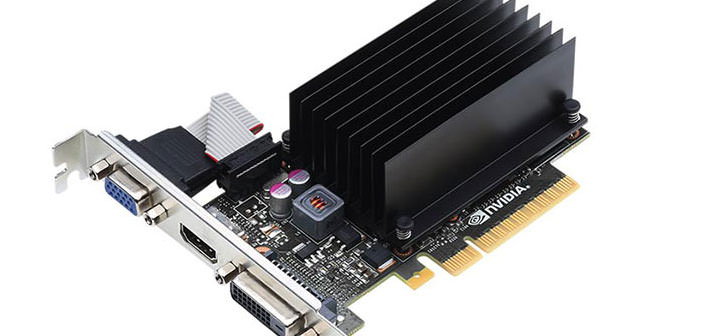A new video card model comes in the lists of NVIDIA partners, but it is an entry level solution designed to be proposed as an alternative to the integrated GPU in Intel and AMD processors.
NVIDIA announced a new video card, but it is not a top of the range proposed as a solution that is proposed as an alternative to the integrated GPU in Intel and AMD processors. We speak of the GeForce GT 710 model, a video card that is distinguished by its compact size and for a list price of less than the threshold of $60.
The board uses the GPU Kepler family, the previous architecture that Maxwell combined with the GeForce video cards of family 900. The GK208 chip integrates an internal 192 CUDA cores, with a 954 MHz clock frequency. The video memory, in the amount of 2 Gbytes , sees DDR3 technology combined with 64 bit interface for maximum bandwidth of 14.4 Gbytes per second.
NVIDIA offers this card as an alternative to GeForce GT 610 model card that uses a GPU with only 48 CUDA cores with 810 MHz clock: the GeForce GT 710 card, while not going to set new standards of performance levels, is a considerable leap later in this segment of the market as regards the NVIDIA solutions.

The card is characterized by a completely passive cooling system, in addition to the absence of power connectors PCI Express supplementary. These features facilitate installation in any system: the only requirement, is the presence of a PCI Express 16x slot on the motherboard because the overall dimensions are very small.
Some partners propose versions characterized by an active cooling system, with a small fan that helps in thermal dissipation: the 19 Watt TDP is in any case very limited, such as not to create problems even with a passive heat sink.
NVIDIA declares, in the documentation in support of the board, using GeForce GT 710 is possible to achieve an increase in speed performance up to 10 times compared to using a GPU integrated in a processor.
This is obviously a limit case, as in general the use of a dedicated GPU, although economic-end allows to obtain interesting increases in speed performance compared to what is offered by the latest CPU.

